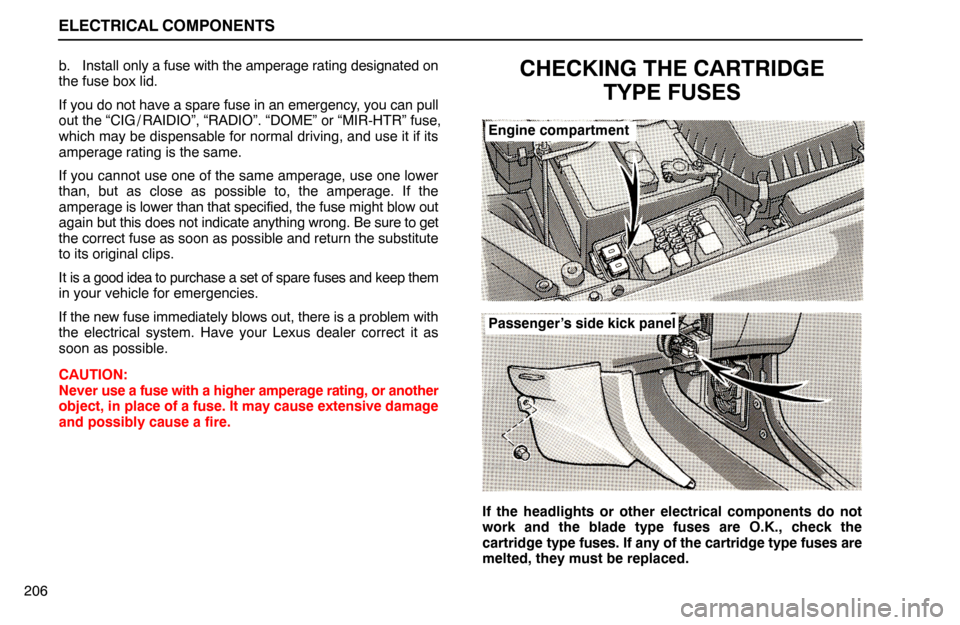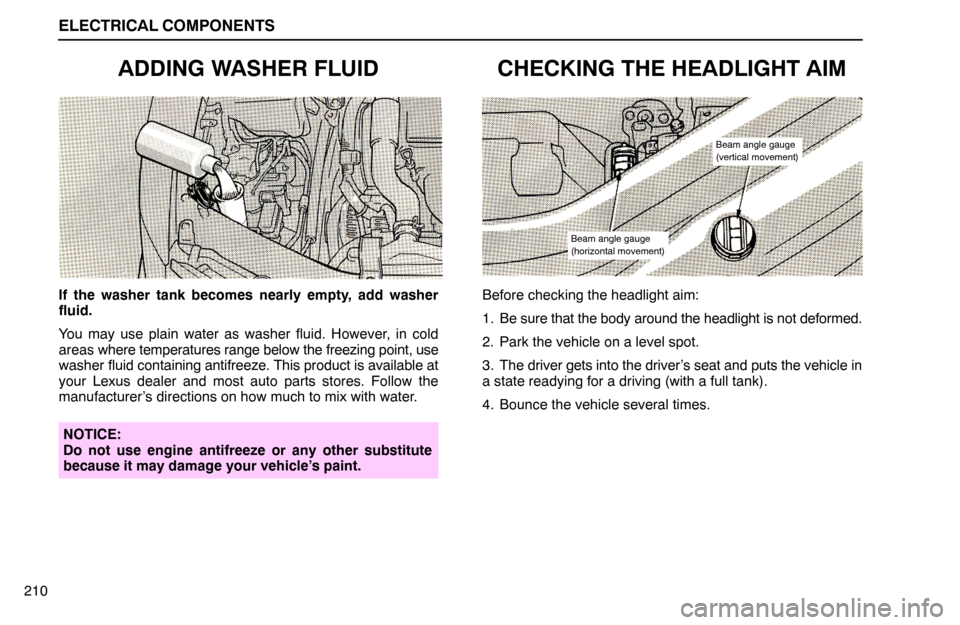ELECTRICAL COMPONENTS
Engine compartment
Passenger’s side kick panel
206b. Install only a fuse with the amperage rating designated on
the fuse box lid.
If you do not have a spare fuse in an emergency, you can pull
out the “CIG / RAIDIO”, “RADIO”. “DOME” or “MIR-HTR” fuse,
which may be dispensable for normal driving, and use it if its
amperage rating is the same.
If you cannot use one of the same amperage, use one lower
than, but as close as possible to, the amperage. If the
amperage is lower than that specified, the fuse might blow out
again but this does not indicate anything wrong. Be sure to get
the correct fuse as soon as possible and return the substitute
to its original clips.
It is a good idea to purchase a set of spare fuses and keep them
in your vehicle for emergencies.
If the new fuse immediately blows out, there is a problem with
the electrical system. Have your Lexus dealer correct it as
soon as possible.
CAUTION:
Never use a fuse with a higher amperage rating, or another
object, in place of a fuse. It may cause extensive damage
and possibly cause a fire.
CHECKING THE CARTRIDGE
TYPE FUSES
If the headlights or other electrical components do not
work and the blade type fuses are O.K., check the
cartridge type fuses. If any of the cartridge type fuses are
melted, they must be replaced.
ELECTRICAL COMPONENTS
Beam angle gauge
(vertical movement)
Beam angle gauge
(horizontal movement)
210
ADDING WASHER FLUID
If the washer tank becomes nearly empty, add washer
fluid.
You may use plain water as washer fluid. However, in cold
areas where temperatures range below the freezing point, use
washer fluid containing antifreeze. This product is available at
your Lexus dealer and most auto parts stores. Follow the
manufacturer’s directions on how much to mix with water.
NOTICE:
Do not use engine antifreeze or any other substitute
because it may damage your vehicle’s paint.
CHECKING THE HEADLIGHT AIM
Before checking the headlight aim:
1. Be sure that the body around the headlight is not deformed.
2. Park the vehicle on a level spot.
3. The driver gets into the driver’s seat and puts the vehicle in
a state readying for a driving (with a full tank).
4. Bounce the vehicle several times.

